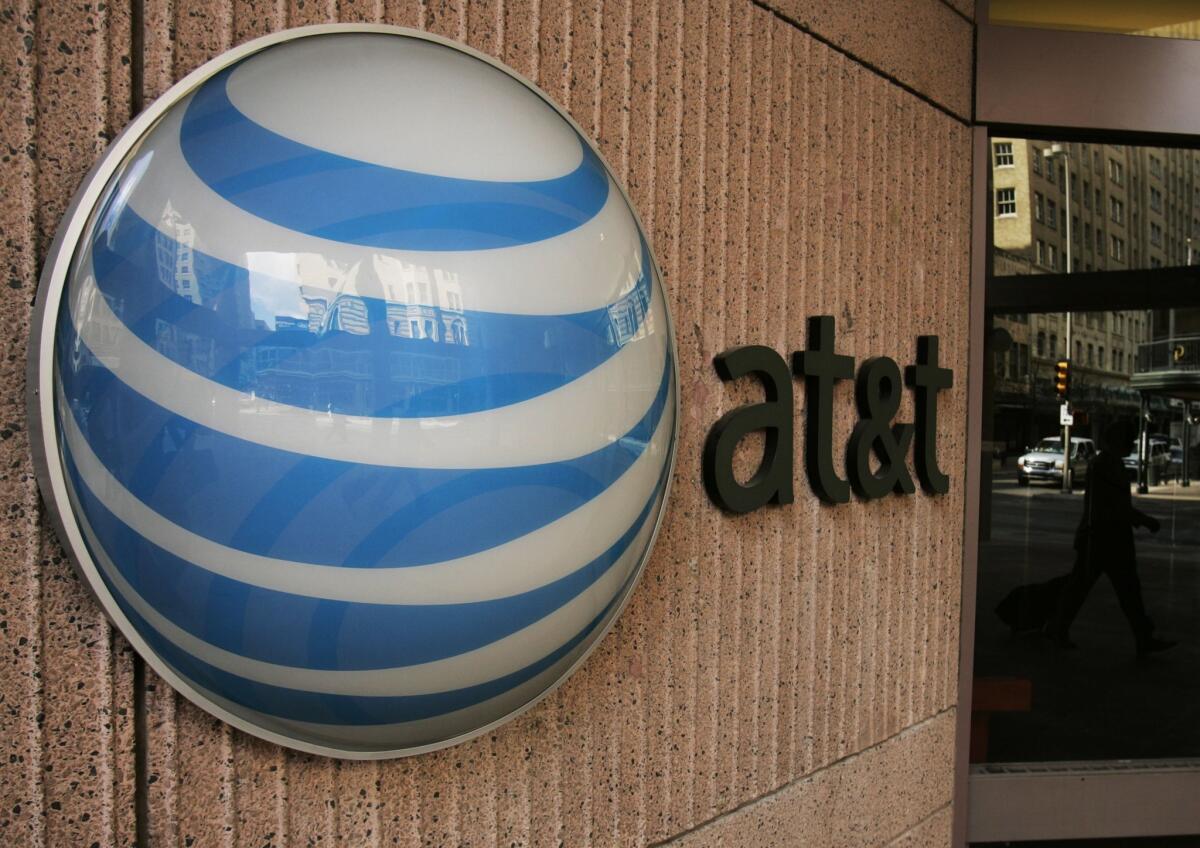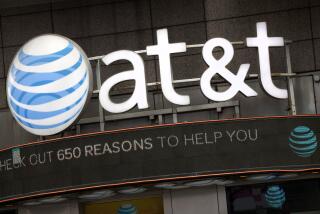Editorial: The promise of a faster Internet for L.A.

- Share via
AT&T’s announcement that it might extend ultra-high-speed broadband service to Los Angeles and dozens of other communities across the country was greeted with no small amount of skepticism from the digital punditocracy. “Don’t celebrate yet,” warned Ars Technica. “More hype than hope,” suggested Latin Post. And there does seem to be a bit of gamesmanship going on between AT&T and Google, which has also made a habit of announcing potential, rather than actual, deployments of gigabit-speed Internet services.
Nevertheless, state-of-the-art broadband lays the foundation for new businesses and provides a competitive advantage for communities. Officials in Los Angeles should take the opportunity seriously and find out what it would take to persuade AT&T to upgrade its network here.
The United States may have invented the Internet, but its download speeds now rank a feeble 34th in the world. The major phone companies have focused their spending on wireless, and while cable operators have long had the technology to offer gigabit connections, they have little financial incentive to do so. A phone company such as AT&T has to run high-capacity fiber optic cables all the way to its customers’ homes to reach gigabit speeds, but that requires a huge investment with an uncertain return.
Google’s launch of Google Fiber, a gigabit broadband service, seems to have changed the equation even though it’s been deployed in only parts of two markets. After Google said it would expand into Austin, Texas, AT&T launched its first gigabit service there. And since Google started talks to bring fiber service to 34 communities in nine metropolitan areas, AT&T has announced its interest in expanding from the one city where it had deployed a next-generation network to about 100 in 24 other metro areas. Meanwhile, a number of smaller Internet providers have been laying fiber optic cables to customers’ homes, making the service available to more than a sixth of all U.S. residences.
Like Google, AT&T isn’t asking cities for subsidies, nor is it tying its local build-outs to its efforts in state capitols to deregulate local phone service. Instead, it says it wants cities to help make the economics of gigabit broadband work by cutting red tape. Blair Levin, head of a consortium that advocates gigabit Internet service, has urged cities to minimize construction delays, round up interested consumers and allow fiber to be rolled out incrementally to the areas that demonstrate enough demand. Those steps reduce the cost and risk of a project, although they also mean that some parts of the community will initially be left behind.
Then again, gigabit Internet service makes the most sense today around college campuses and medical centers, near research hubs and in clusters of high-tech entrepreneurs. At this point, one can only imagine the sort of bandwidth-hogging application that would lead the typical consumer to want that much capacity. But there’s a “Field of Dreams” quality to the Internet, with each leap in connection speed quickly being met by an explosion in ways to use it. AT&T is offering Los Angeles a chance to start making that leap, and we can’t afford to miss it.
More to Read
A cure for the common opinion
Get thought-provoking perspectives with our weekly newsletter.
You may occasionally receive promotional content from the Los Angeles Times.










